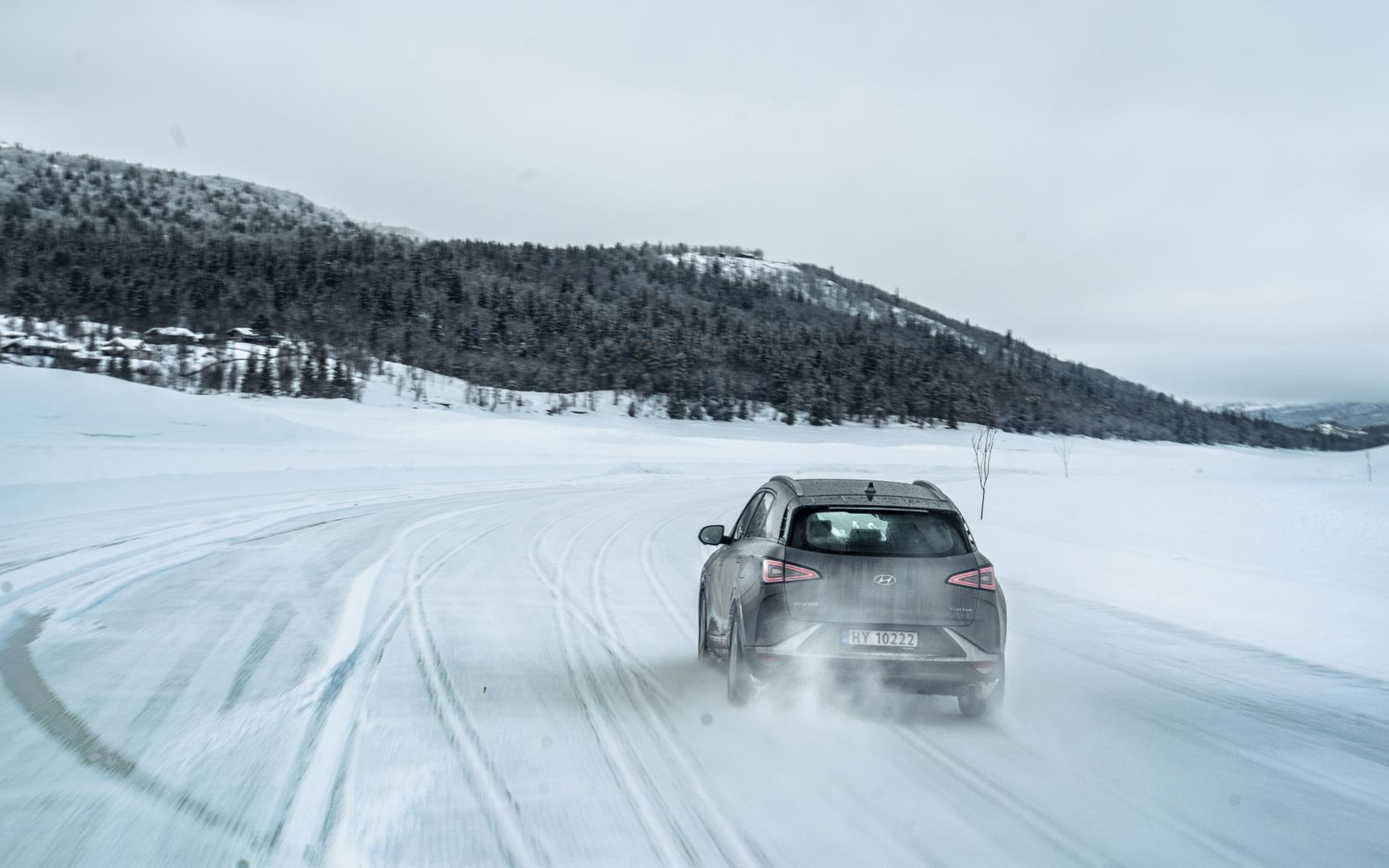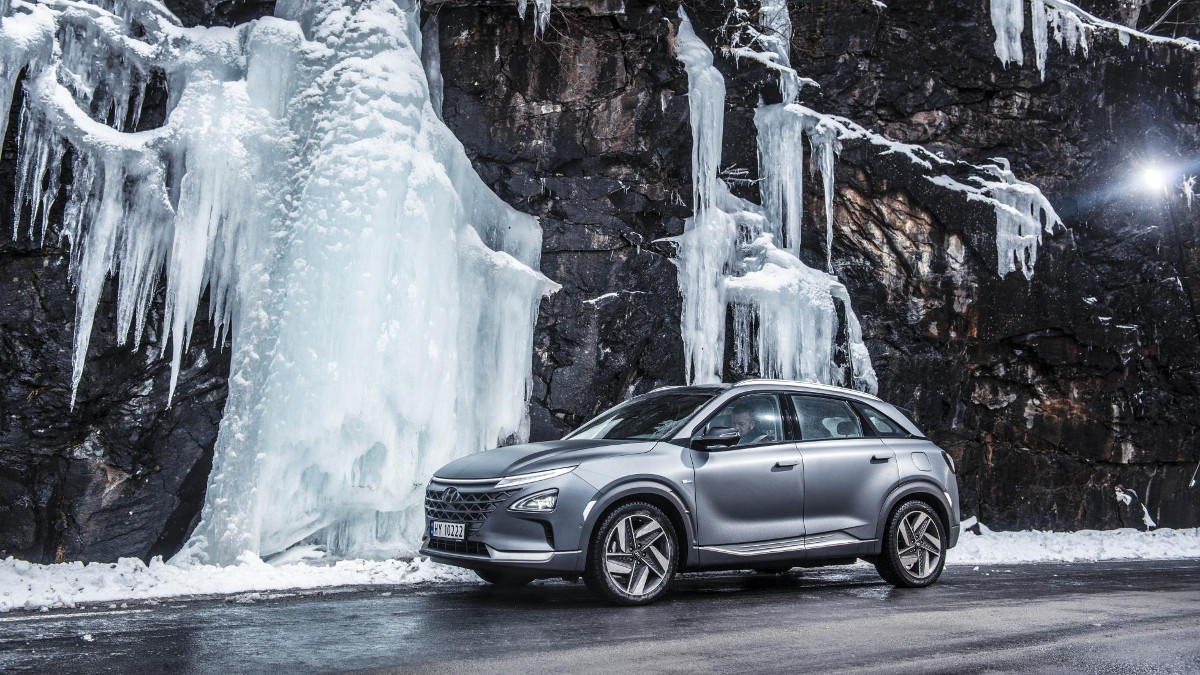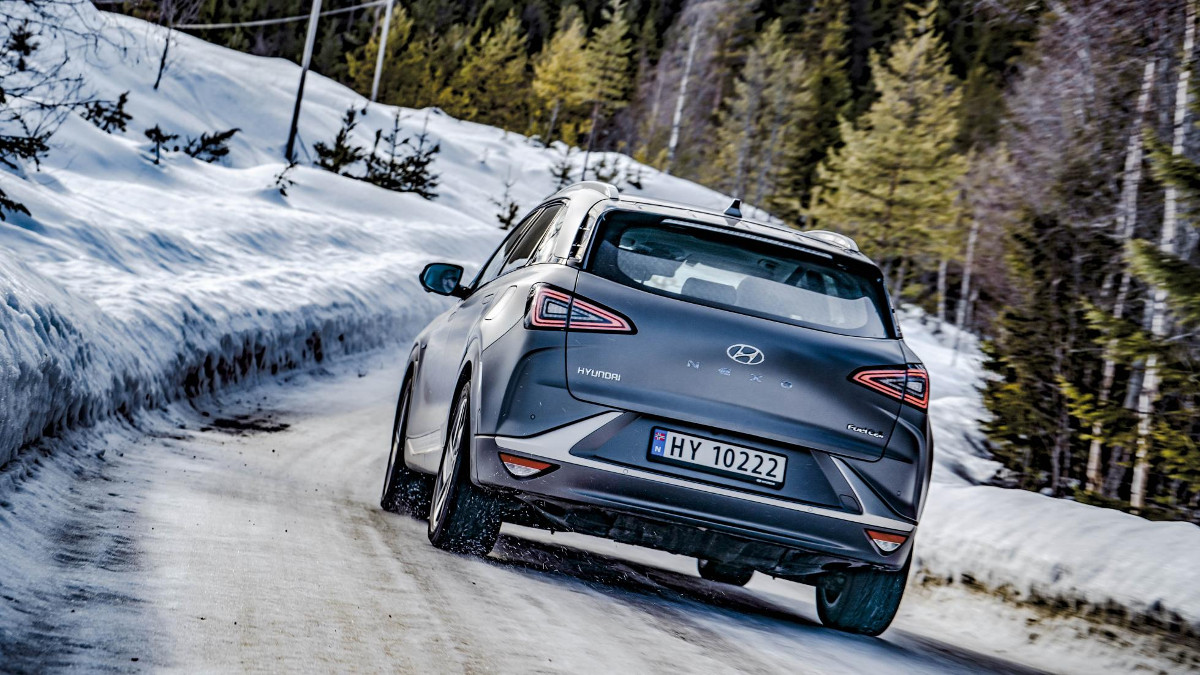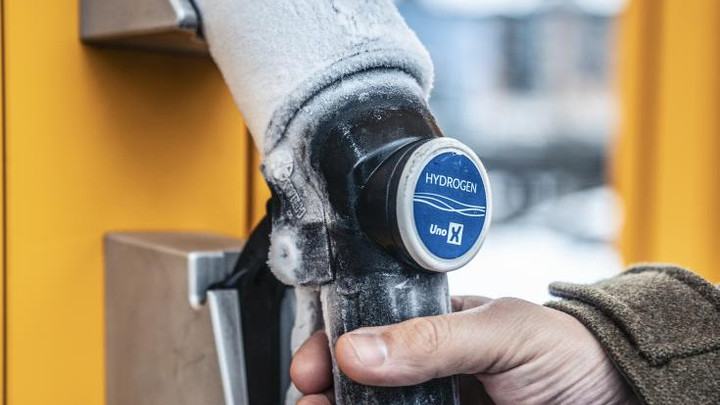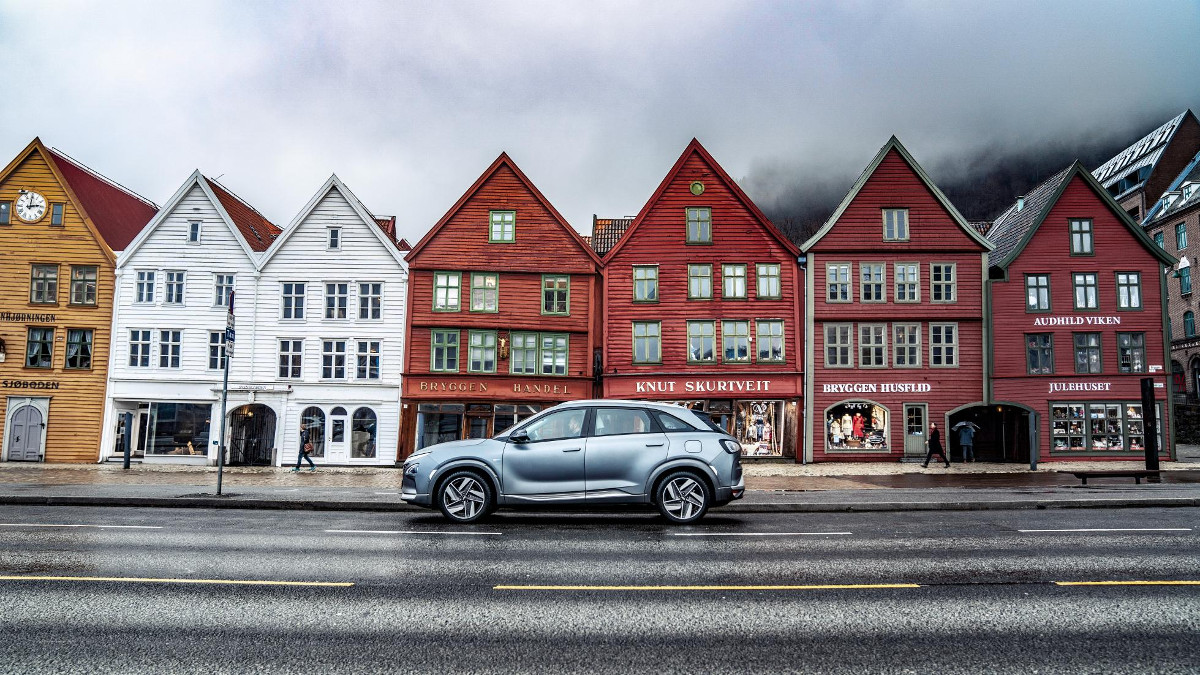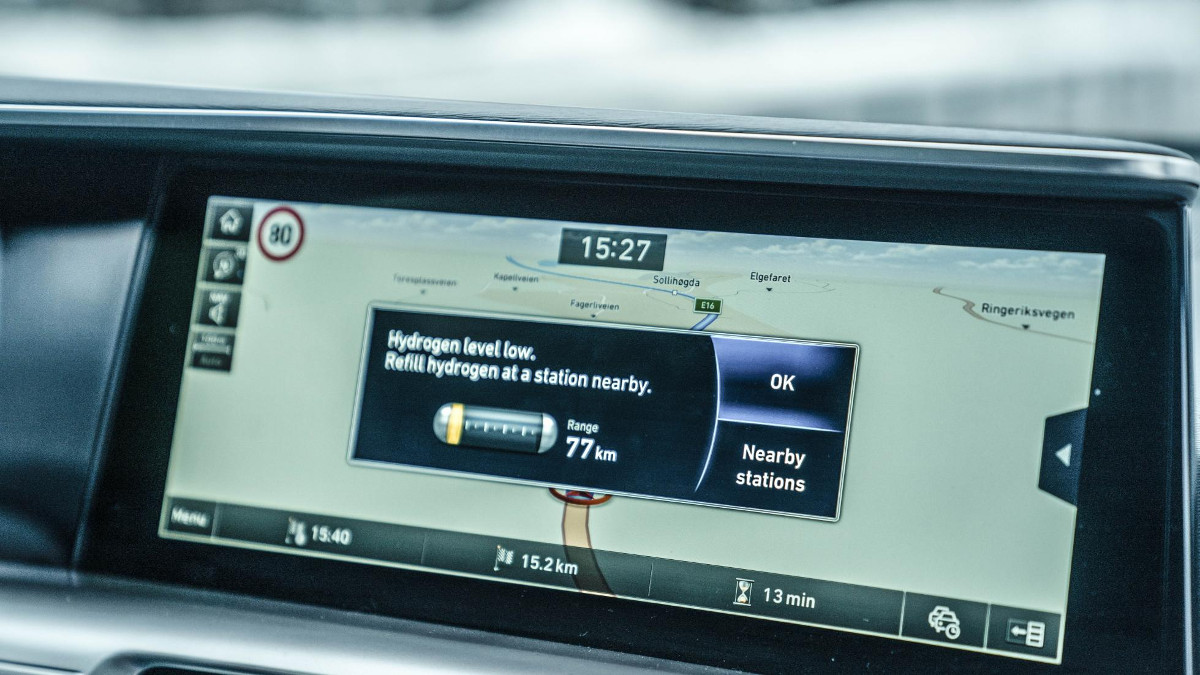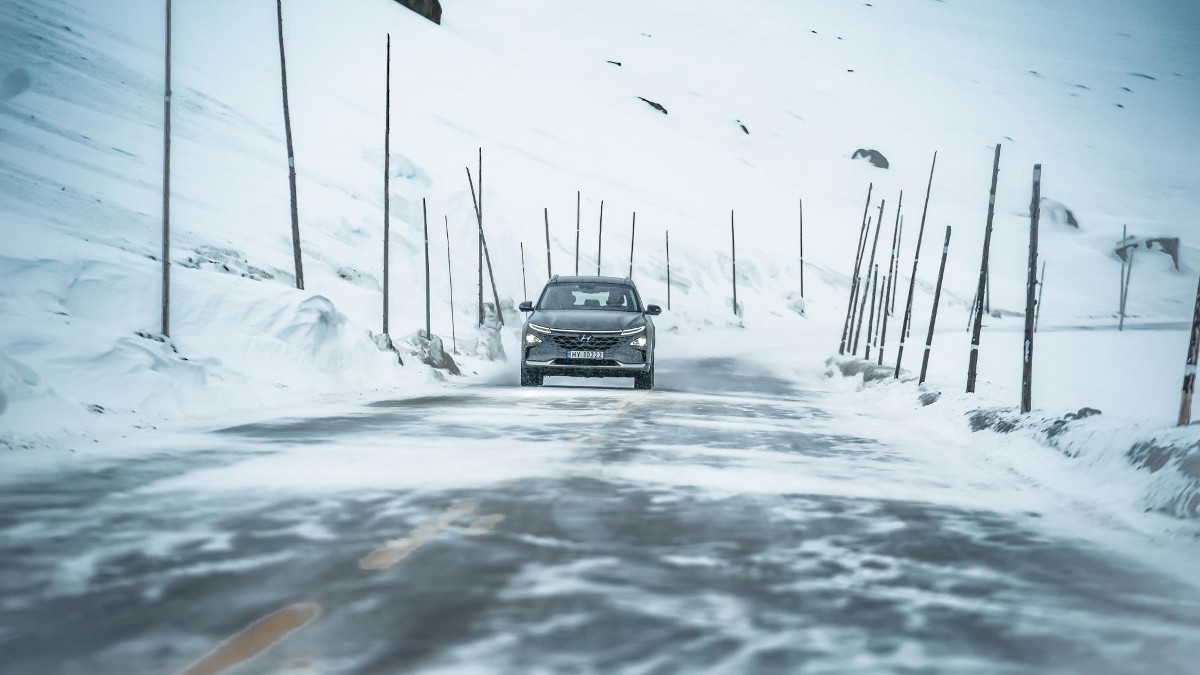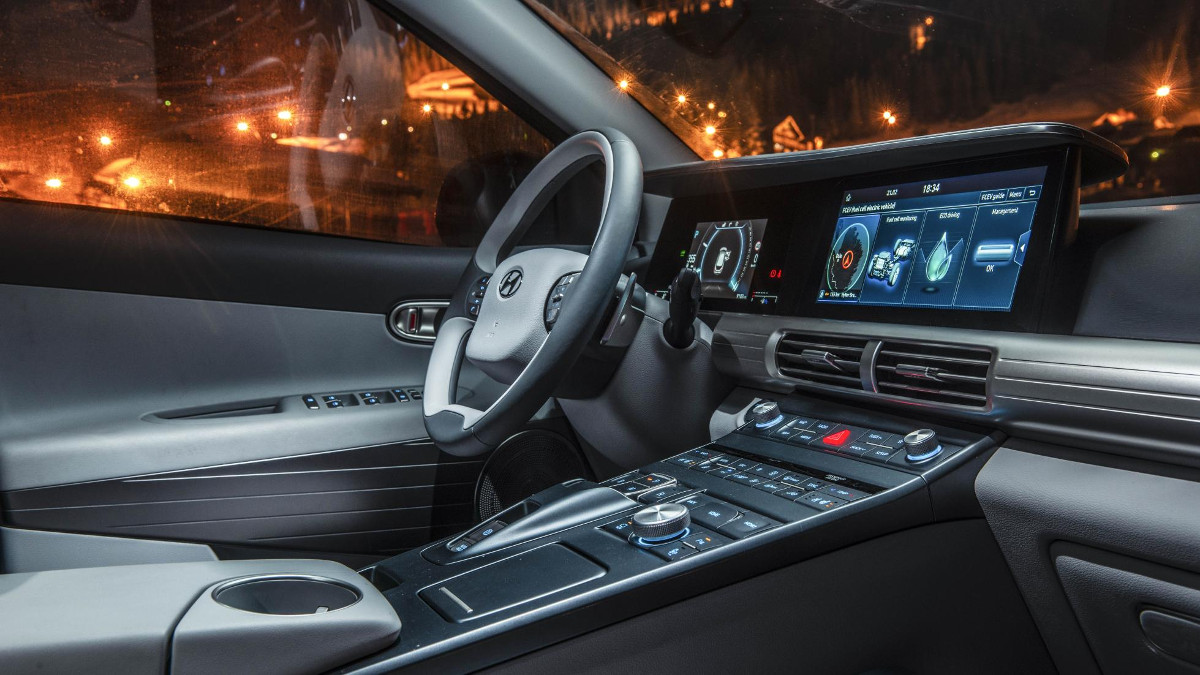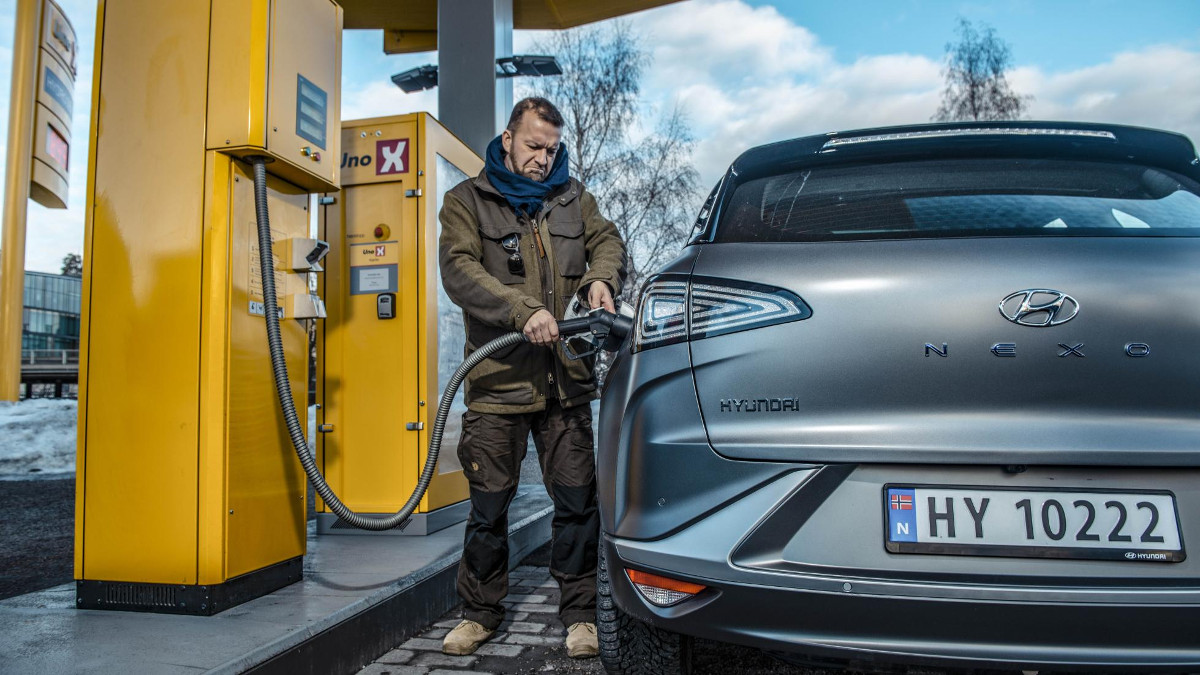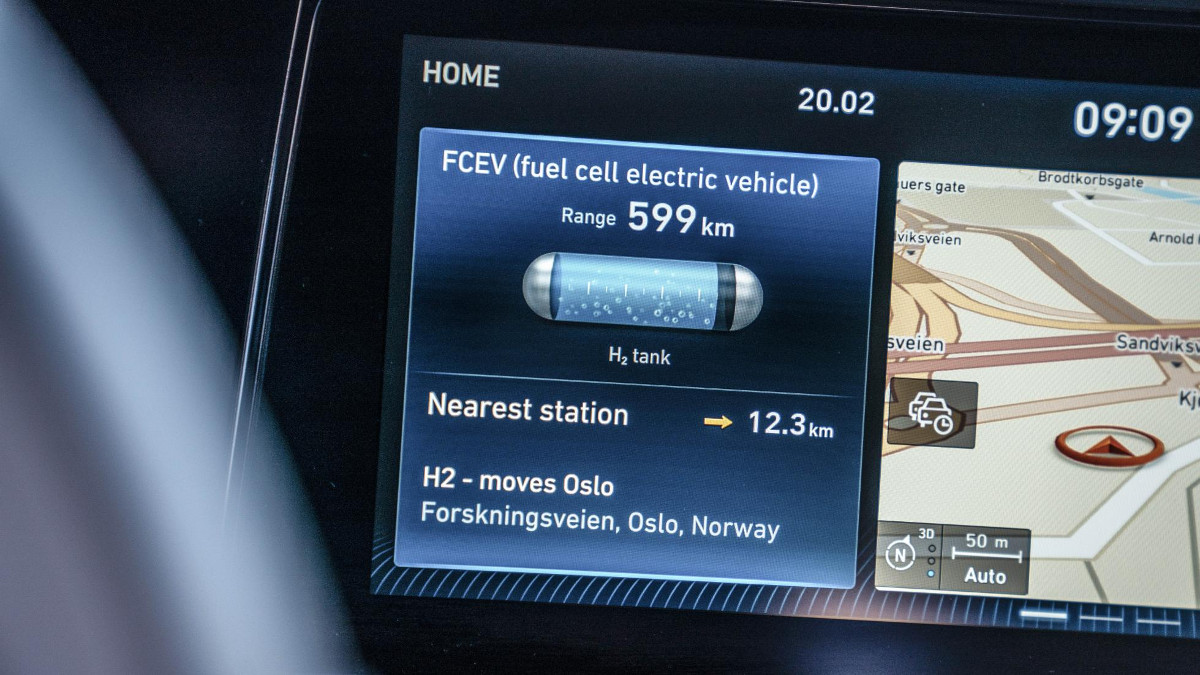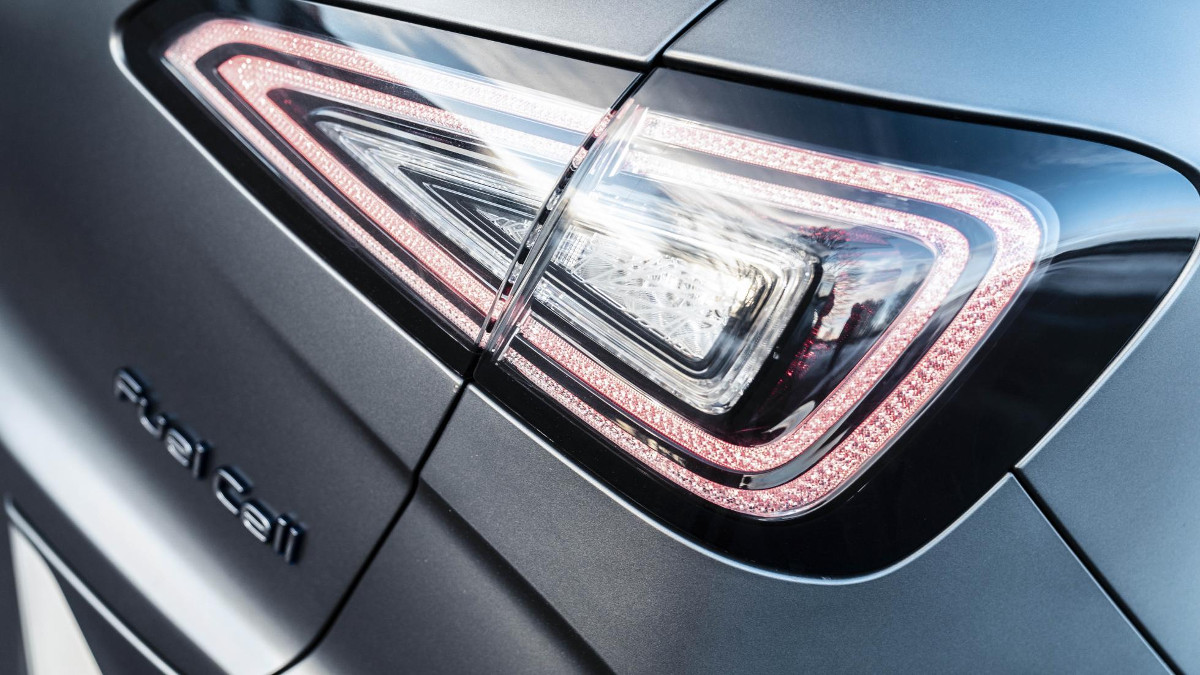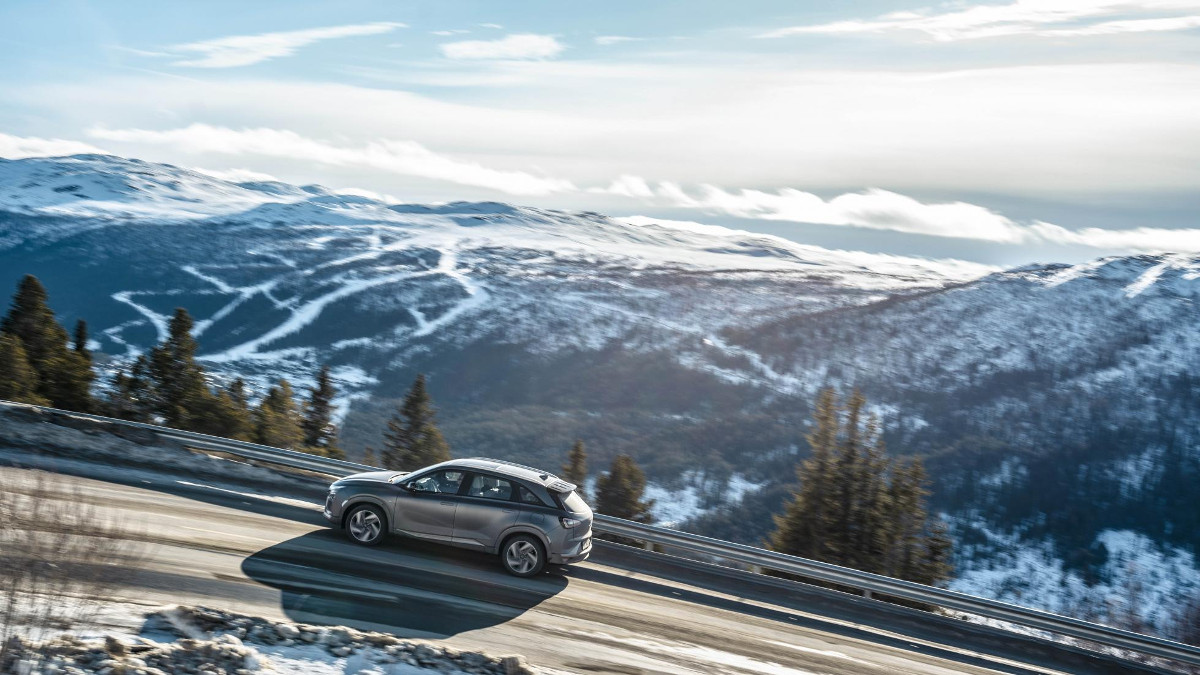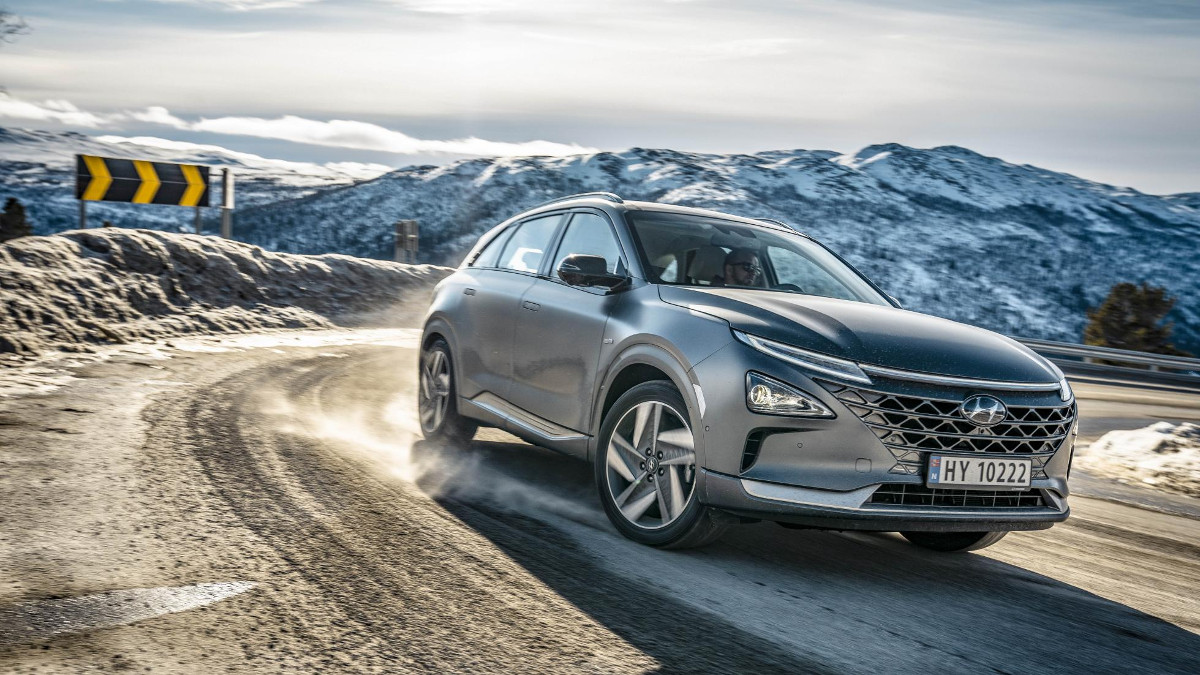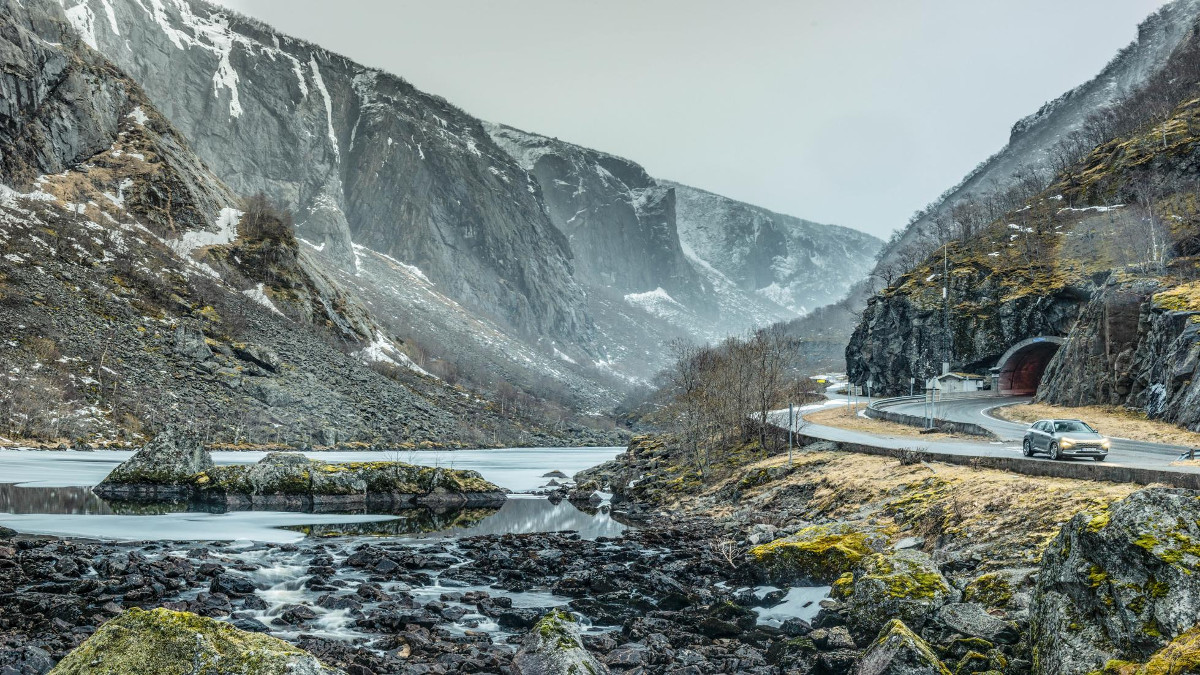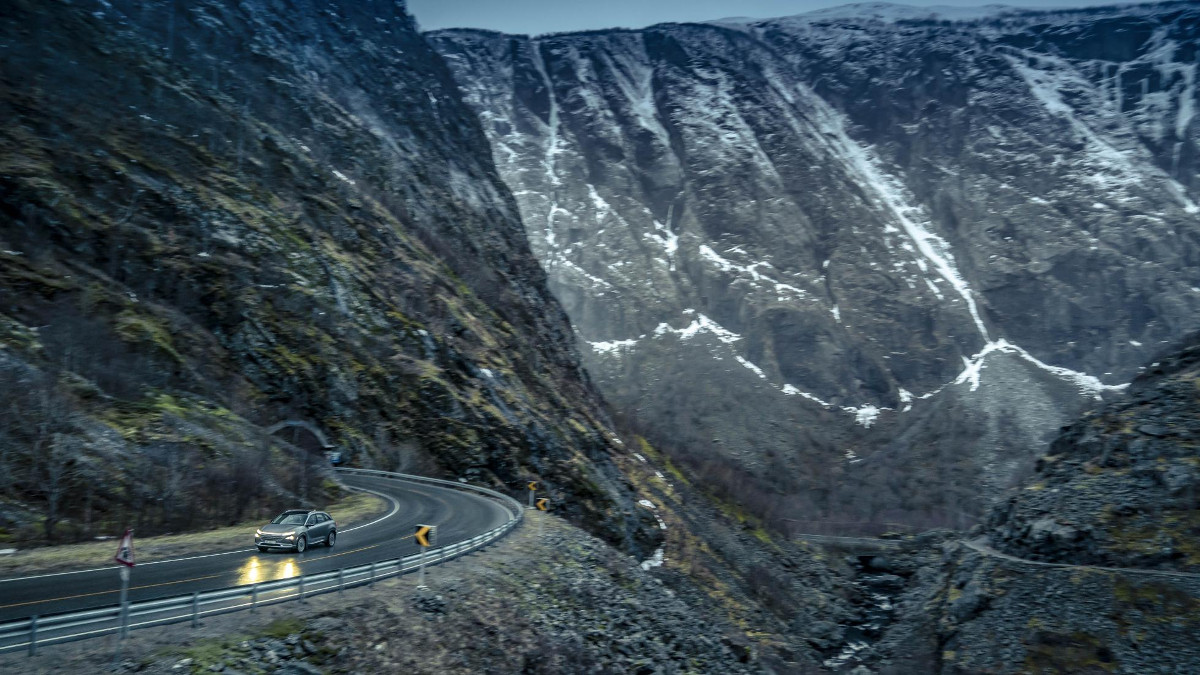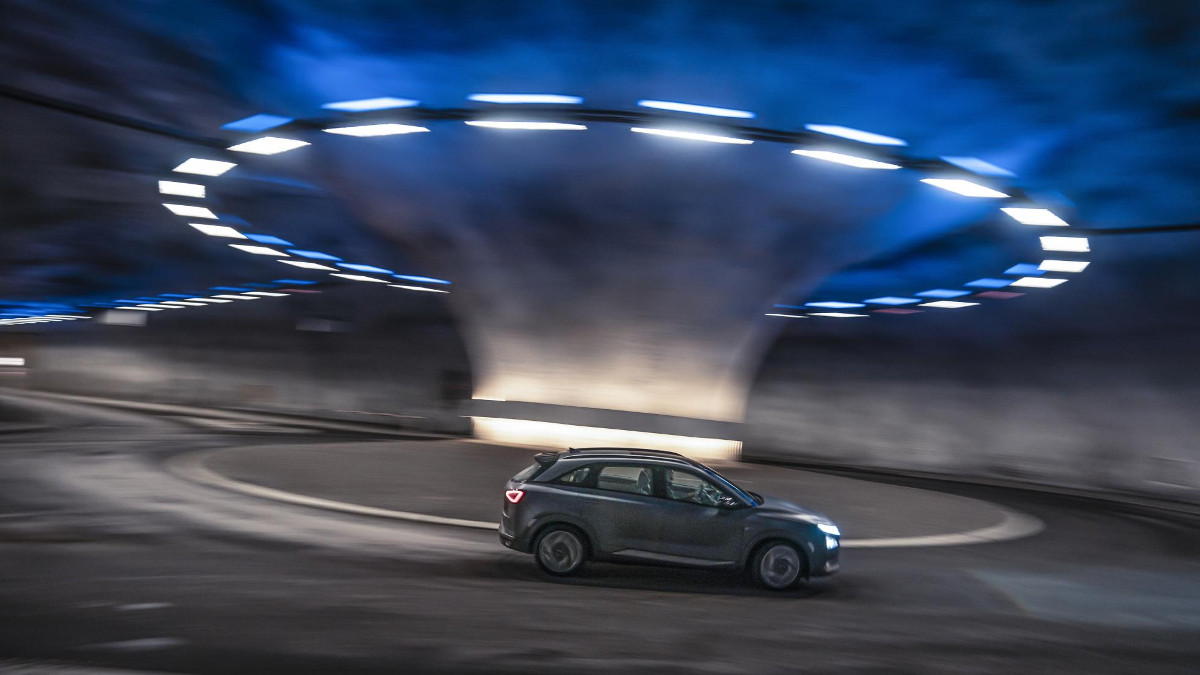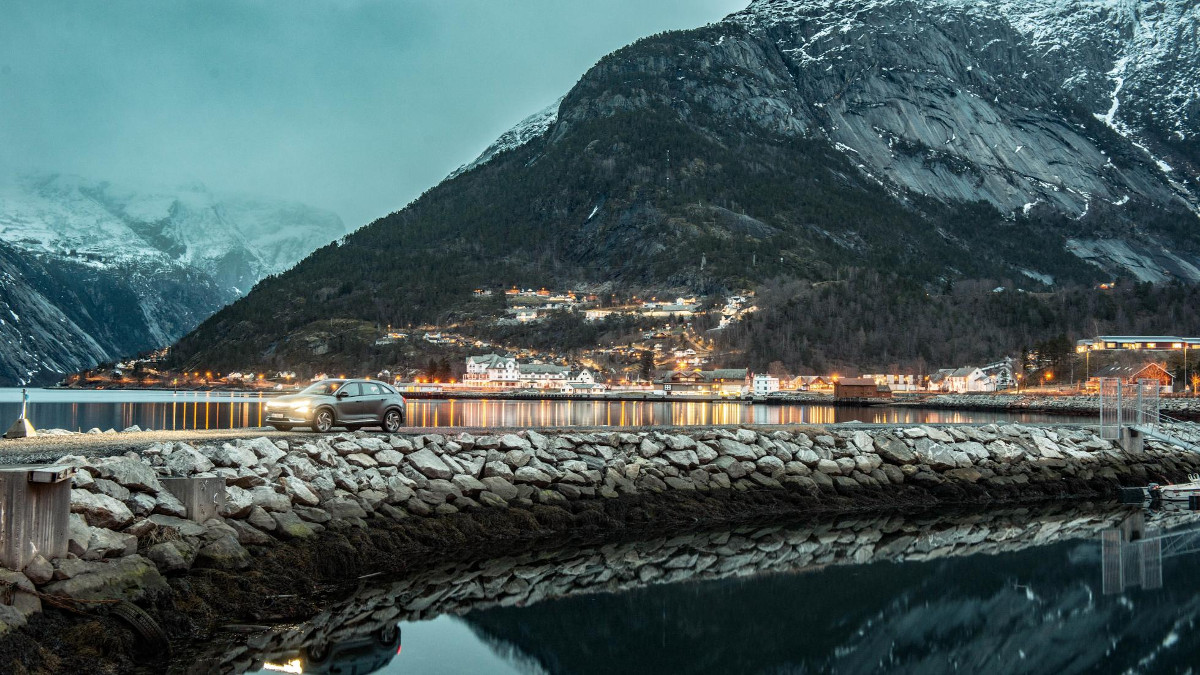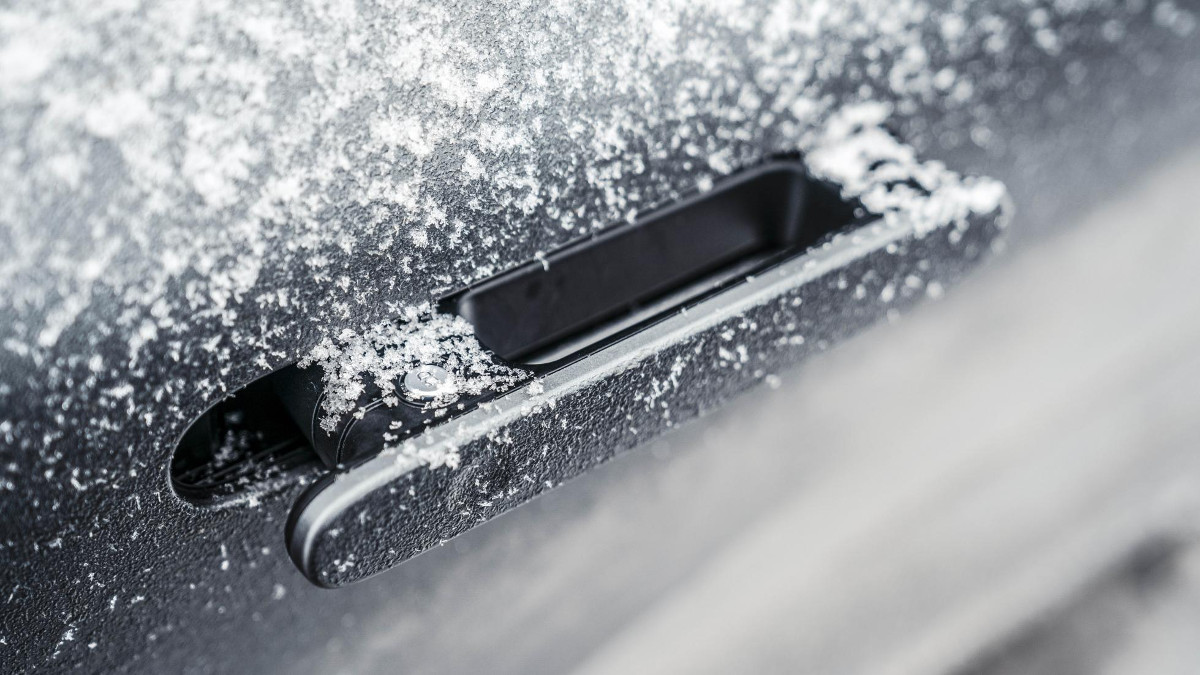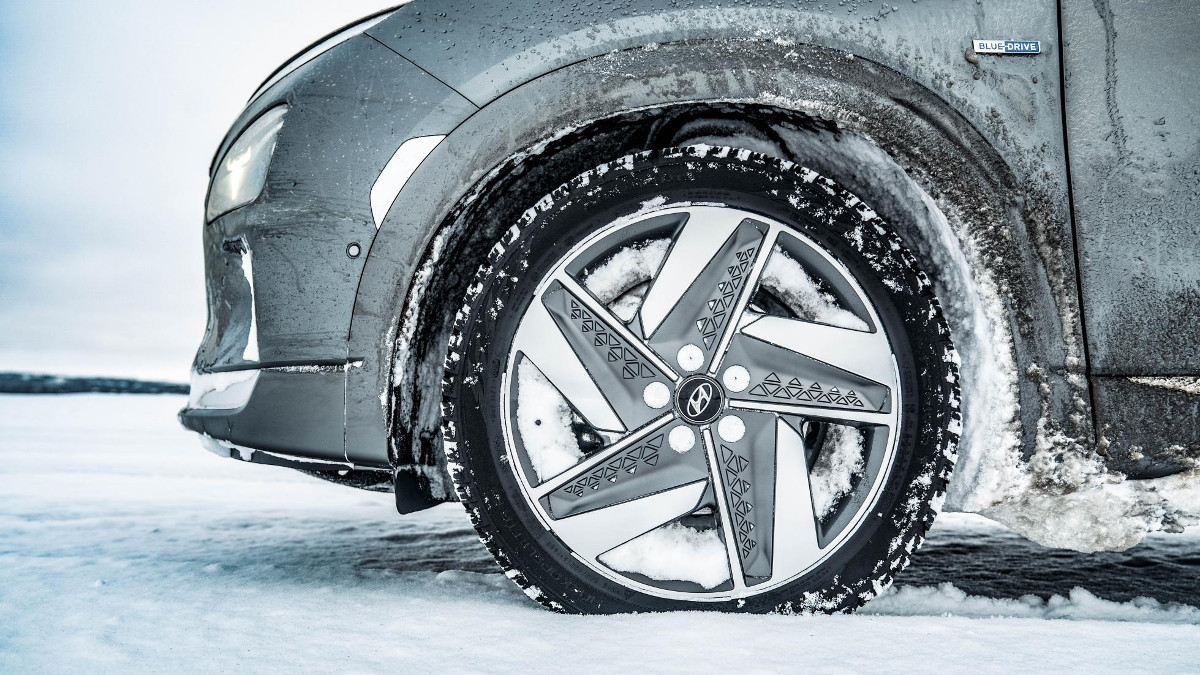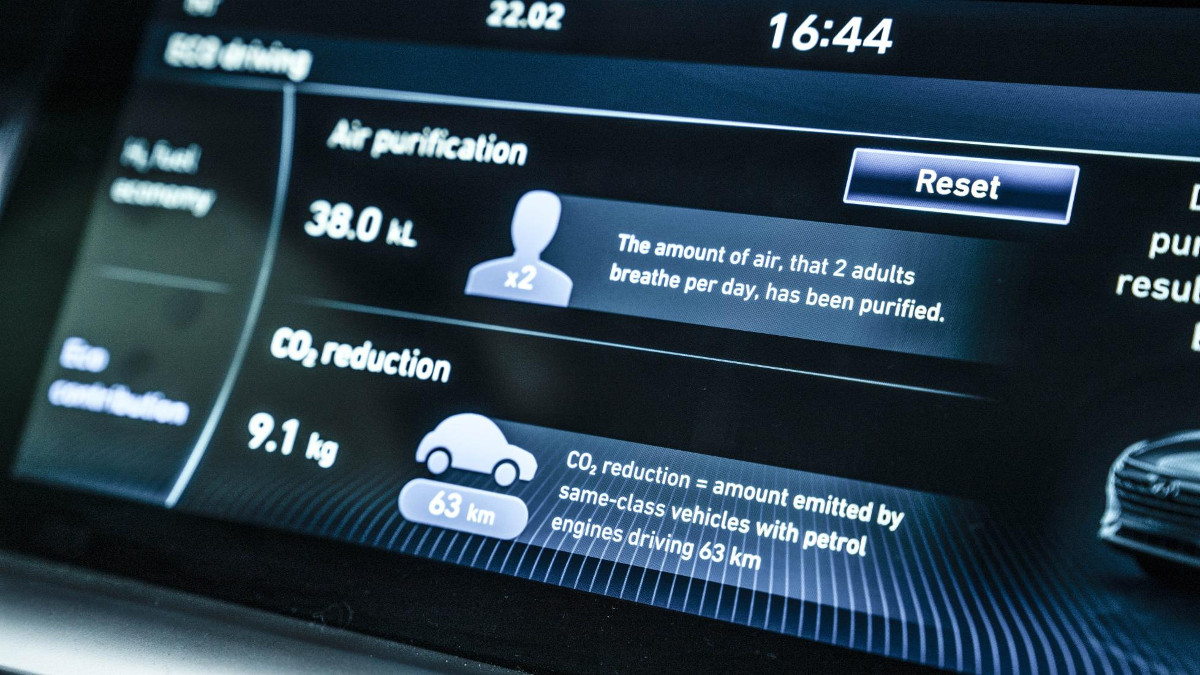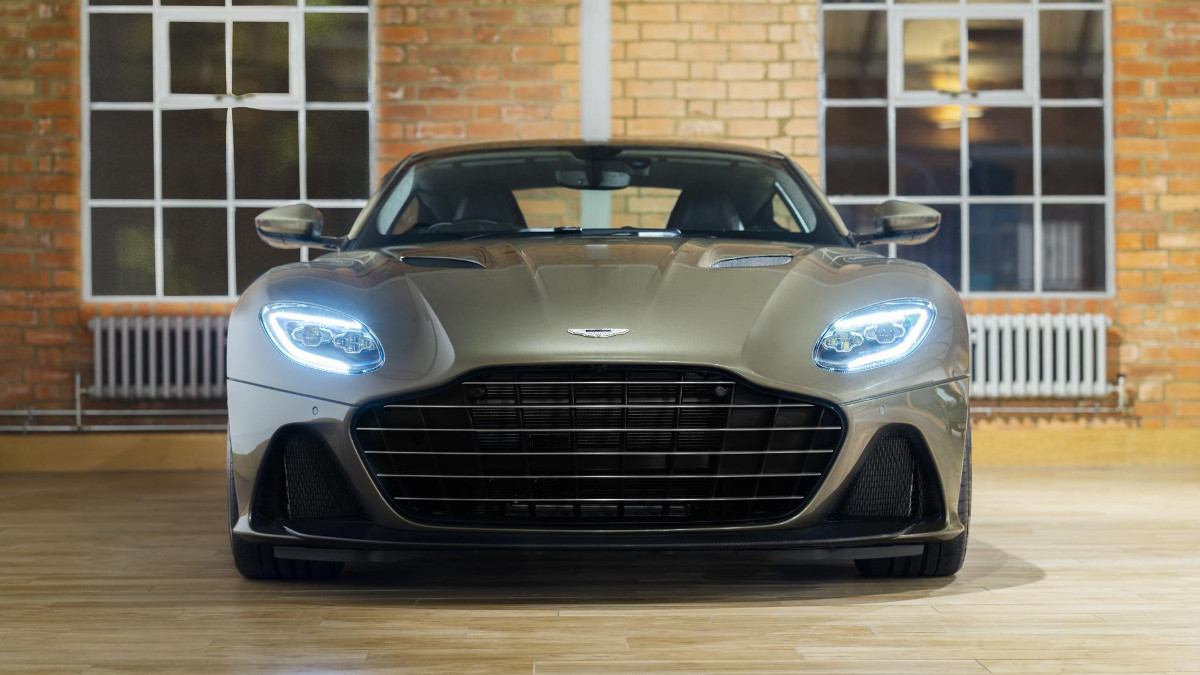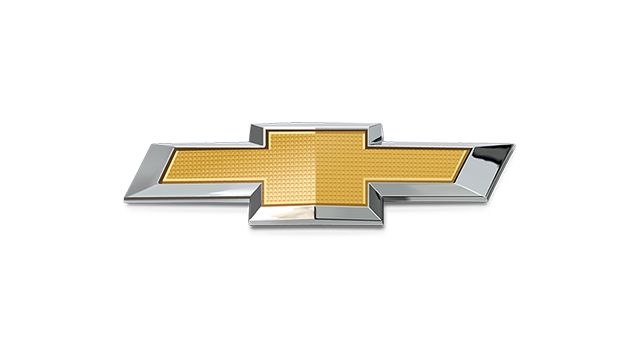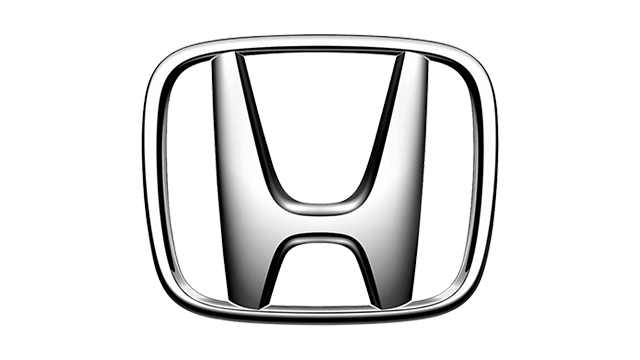There is a place on the Norwegian RV7 road between—roughly—Maurset and Øvre Eidfjord, just to the south of the Vøringfossen, where you transition from slightly anonymous trunk route to breath-snatching beauty via a rock tube made by drunk people. One moment you’re happily pottering along, the next you enter an innocuous tunnel—there are lots hereabouts—and spiral around inside a mountain like a confused marble, looping twice before popping out in the gaping granite maw of a giant crack in the landscape. There are waterfalls frothing mightily from the edges of cliffs, a river filled with the boundless energy of excess gravity, the softer features of the area swept up and stuffed into this little land-based cove of green and gray.
It’s not...pretty, as such—too harsh for that, the kind of view that’s either geological ruin or majesty, I can never work out which. But it’s about as impressive as vistas get, the vigorous side of epic and deeply, unavoidably, ancient. And at the bottom of one of nature’s oldest wonders now sits one of humankind’s newest: a hydrogen car.
